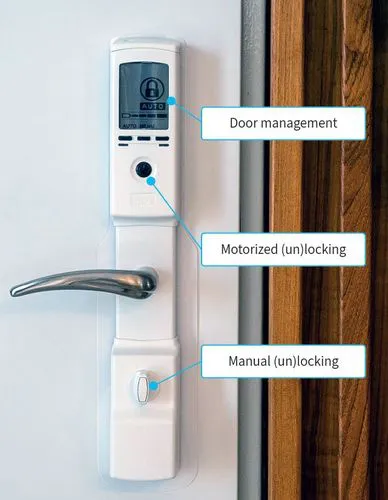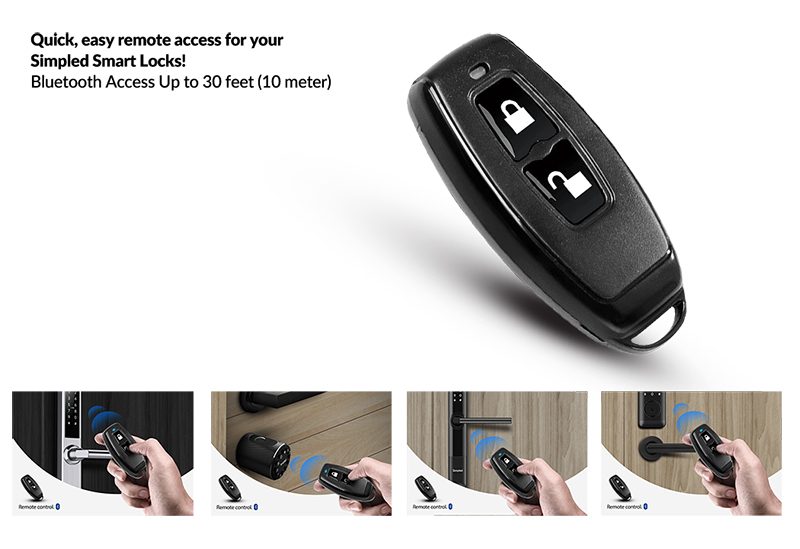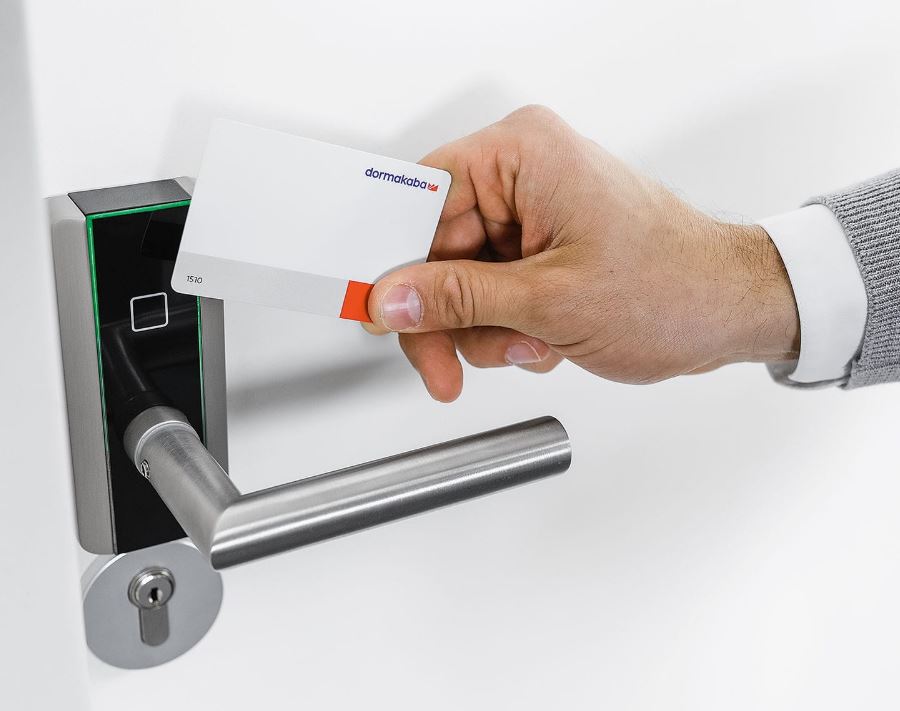How to Troubleshoot Common Smart Lock Issues

Common Smart Lock Issues
Smart locks have become increasingly popular in recent years due to their ability to improve home security and provide convenience. With a smart lock, you can control access to your home remotely, monitor activity, and receive alerts when someone enters or exits your home.
However, like any technology, smart locks have their issues. Users may encounter common issues with their smart locks, including connectivity problems, battery life issues, and software glitches. For example, if your smart lock loses its Wi-Fi connection, you may not be able to control it remotely. Similarly, you may be locked out of your home if the battery dies.
Another issue that users may face is compatibility problems with other devices in their homes. For example, if your smart lock is incompatible with your existing security system, you may need help integrating it seamlessly.
While smart locks offer many benefits for improving home security and convenience, they are not without their challenges. Users may encounter issues such as connectivity problems, battery life issues, software glitches, and compatibility problems with other devices in their home. However, by doing research and choosing a reputable brand that meets their specific needs, users can minimize these issues and enjoy the benefits of a high-quality smart lock.
Battery Level Check and Replacement
Regularly checking the battery level on your smart lock is crucial to ensure optimal performance and avoid getting locked out of your home. Most smart locks have a built-in battery indicator that shows the current battery level. To check the battery level, you can usually do so through the mobile app or by physically checking the lock.
If the battery level is low, it must be replaced promptly. To replace the battery, follow these steps:
1. Remove the cover of the smart lock using a screwdriver or other tool as required.
2. Take out the old battery and dispose of it properly.
3. Insert a new battery into the slot, making sure to align it correctly.
4. Replace the cover and secure it in place.
Choosing the recommended type of battery for your smart lock is essential to ensure optimal performance. Most smart locks use alkaline batteries, but some may require lithium batteries for better performance.
Checking and replacing the battery on your smart lock is crucial for optimal performance and avoiding getting locked out of your home. Follow these steps to replace the battery when necessary and choose the recommended type of battery for optimal performance. By doing so, you can enjoy enhanced convenience and security with your smart lock.
Proper Installation and Calibration

Proper installation and calibration are crucial for the smooth operation of your smart lock. Incorrect installation can lead to connectivity issues, battery life problems, and other performance issues. Here are the steps to ensure the correct installation and calibration of your smart lock:
1. Read the manufacturer's instructions carefully before starting the installation process.
2. Gather all the necessary tools required for installation and calibration, such as a screwdriver, level, and measuring tape.
3. Choose a suitable location for your smart lock that is easily accessible and secure.
4. Ensure that the door frame is properly aligned and levelled before installing the smart lock.
5. Follow the manufacturer's instructions to install the smart lock on your door.
6. Once installed, calibrate the smart lock by following the manufacturer's instructions carefully.
7. Test the smart lock to ensure that it is working correctly.
It's essential to use high-quality tools for installation and calibration to ensure optimal performance of your smart lock. A screwdriver with a comfortable grip will help you install the smart lock smoothly without damaging it.
Proper installation and calibration are crucial for the smooth operation of your smart lock. Follow these steps carefully to ensure your smart lock's correct installation and calibration. By doing so, you can enjoy enhanced convenience and security in your home with your smart lock.
Bluetooth or Wi-Fi Connection Verification
Connectivity is crucial when it comes to communicating with your smart lock. Whether it's through Bluetooth or Wi-Fi, a stable connection is necessary for smooth operation. If you're experiencing issues with your smart lock, the first step is to verify your smartphone's Bluetooth or Wi-Fi connection. Here are some troubleshooting steps:
1. Check that your smartphone's Bluetooth or Wi-Fi is turned on.
2. Make sure that your smartphone is within range of the smart lock.
3. Restart your smartphone and try again.
4. Disable and then re-enable Bluetooth or Wi-Fi on your smartphone.
5. Try connecting to the smart lock using a different device.
If these steps do not solve the issue, you may need to reset the smart lock and start the setup process again.
Connectivity is crucial for communicating with your smart lock. If you're experiencing issues, try troubleshooting steps like verifying your smartphone's Bluetooth or Wi-Fi connection. By doing so, you can ensure the optimal performance of your smart lock and enjoy enhanced convenience and security in your home.
Compatible App Usage
Using a compatible app is crucial when controlling your smart lock. A compatible app ensures that you can access all the features of your smart lock and control it seamlessly. Most smart lock manufacturers have their own apps, but some also work with third-party apps. Here are some recommended apps based on specific models/brands:
1. August Home - The August app is compatible with all August Home smart locks and provides remote access, activity monitoring, and virtual keys.
2. Schlage - The Schlage Home app works with Schlage Connect and Sense smart locks and allows you to control your lock from anywhere, set up user codes, and receive notifications.
3. Kwikset - The Kwikset app works with Kwikset Kevo smart locks and allows you to lock and unlock your door remotely, receive notifications, and manage user access.
4. Yale - The Yale Access app works with Yale Assure Locks and allows you to control your lock remotely, set up user codes, and receive notifications.
5. Nest - The Nest app works with Nest x Yale Locks and allows you to control your lock remotely, set up user codes, and receive alerts.
Choosing the right app for your smart lock is essential to ensure optimal performance. Make sure to check the manufacturer's website for compatibility before downloading any third-party apps.
Using a compatible app is crucial when controlling your smart lock. Choose an app that is compatible with your specific model/brand of smart lock to ensure optimal performance. By doing so, you can enjoy enhanced convenience and security in your home with your smart lock.
Resetting Smart Locks
Resetting smart locks is a last-resort troubleshooting step that should only be done when all other options have been exhausted. It's necessary when the lock is not functioning correctly and you've tried everything else to fix it. Resetting your smart lock will erase all the settings and user data, so it's crucial to back up any essential information before resetting. Here is a step-by-step guide on how to reset different models/brands of smart locks:
1. August Home - To reset August Home smart locks, press and hold down the button on the lock for 10 seconds until the LED light flashes red.
2. Schlage - To reset Schlage Connect and Sense smart locks, remove the battery cover and press and hold the button on the circuit board for 30 seconds until the LED light turns red.
3. Kwikset - To reset Kwikset Kevo smart locks, remove the battery cover and press and hold down the reset button for 10 seconds until the LED light flashes red.
4. Yale - To reset Yale Assure Locks, remove the battery cover and press and hold down the button on the circuit board for 10 seconds until you hear a beep.
5. Nest - To reset Nest x Yale Locks, remove the battery cover and press and hold down the button on the circuit board for 10 seconds until you hear a beep.
Resetting your smart lock should be done as a last-resort troubleshooting step when all other options have been exhausted. Always back up any essential information before resetting your lock, as this process will erase all settings and user data. Follow these steps carefully to ensure the successful resetting of your smart lock.
Testing Different Access Methods

Modern-day locks come with various access methods, such as key fobs and PIN codes. Each method has benefits and drawbacks, making it essential to test which access method works best in certain situations. Here's an overview of the different access methods available in most modern-day locks:
1. Key Fobs - Key fobs are small devices that allow you to lock and unlock your door with a push of a button. They are convenient and easy to use, but they can be lost or stolen.
2. PIN Codes - PIN codes are numeric codes that you enter on a keypad to unlock your door. They are more secure than key fobs since they can't be lost or stolen, but they require you to remember the code.
3. Biometric Scanning - Biometric scanning uses fingerprint recognition or facial recognition technology to unlock your door. It's secure and convenient, but it can be expensive.
When testing which access method works best in certain situations, consider factors such as convenience, security, and cost. For example, if you have children who often forget their key fobs or lose them, a PIN code may be a better option. On the other hand, if you're looking for the most secure option, biometric scanning may be the way to go.
Testing different access methods is crucial when choosing the right lock for your needs. Consider factors such as convenience, security, and cost when deciding which access method works best in certain situations. By doing so, you can ensure the optimal performance of your lock and enjoy enhanced convenience and security in your home.
Upgrading Your Smart Lock
Upgrading your smart lock can be necessary for various reasons. Perhaps you want to improve security, add new features, or enhance convenience. Before upgrading, there are several factors to consider, such as compatibility with your current system, ease of installation, and cost.
Some newer models offer better functionality than older ones. For example, the August Smart Lock Pro offers remote access, activity monitoring, and virtual keys. The Schlage Encode Smart Wi-Fi Deadbolt allows you to control your lock from anywhere using your smartphone and voice commands. The Kwikset Halo Touchscreen Smart Lock uses biometric scanning technology for enhanced security.
When upgrading your smart lock, it's essential to choose a model that meets your needs and fits your budget. Consider the features you need and what you're willing to pay for them. Make sure the lock is compatible with your existing system and easy to install.
Upgrading your smart lock can be necessary for various reasons. Consider factors such as compatibility, ease of installation, and cost before making a decision. Some newer models offer better functionality than older ones and can enhance security and convenience in your home. Choose a model that meets your needs and fits your budget to enjoy the benefits of a smart lock upgrade.
Inspect & Clean Locking Mechanism
Inspecting and cleaning the locking mechanism of your smart lock is crucial to ensure optimal performance and prevent damage or wear. Here are some signs that indicate damage or wear in the locking mechanism:
1. Difficulty turning the key or unlocking the door.
2. The lock feels loose or wobbly.
3. The lock makes unusual noises when turning the key.
To inspect the locking mechanism, remove the cover plate and examine the internal components for any signs of damage or wear. Check for loose screws, damaged springs, or worn-out pins. If you notice any issues, it's best to replace the damaged parts.
When cleaning your smart lock, use a soft cloth and mild soap solution to clean the exterior surfaces. Avoid using abrasive cleaners or solvents that can damage the finish. Use compressed air to blow out any debris or dust from inside the lock.
It's also essential to lubricate the locking mechanism regularly with a silicone-based lubricant to prevent rust and corrosion and ensure smooth operation.
Inspecting and cleaning your smart lock's locking mechanism is crucial to ensure optimal performance and prevent damage or wear. Regular maintenance can prolong your smart lock's lifespan and enhance security in your home.
Adjustment Of Loose Screws
Loose screws in a smart lock can cause various issues, such as difficulty turning the key or unlocking the door. Here are the symptoms indicating loose screws:
1. The lock feels loose or wobbly.
2. The lock makes unusual noises when turning the key.
3. The key doesn't turn smoothly, or it gets stuck.
To tighten loose screws in a smart lock, you'll need a screwdriver that fits the screws' size and type. Start by removing the cover plate to access the internal components. Tighten any loose screws using the screwdriver until they're snug but not too tight.
It's essential to avoid over-tightening the screws as this can cause damage to the lock's internal components. Also, make sure not to strip the screws by using too much force or an incorrect screwdriver.
Tightening loose screws in a smart lock is crucial to ensure optimal performance and prevent damage or wear. Always use a screwdriver that fits the screw's size and type, and avoid over-tightening or stripping them. By doing so, you can prolong your smart lock's lifespan and enjoy enhanced security in your home.
Firmware Updates
Firmware updates are essential for smart locks to ensure optimal performance and security. These updates fix bugs, improve functionality, and address security vulnerabilities. Here's how to check if there are any available firmware updates for your smart lock:
1. Check the manufacturer's website or app for any available updates.
2. Follow the instructions provided by the manufacturer to download and install the update.
Before updating your smart lock's firmware, make sure to back up any settings or configurations you've made to avoid losing them during the update process. Also, ensure that your smart lock has enough battery power or is connected to a power source during the update.
To update your smart lock's firmware, follow these steps:
1. Download the firmware update from the manufacturer's website or app.
2. Connect your smartphone or computer to the same Wi-Fi network as your smart lock.
3. Open the manufacturer's app and navigate to the firmware update section.
4. Follow the instructions provided by the app to install the update.
It's essential to keep your smart lock's firmware up-to-date to ensure optimal performance and security. By following these steps, you can easily check for and install any available firmware updates for your smart lock.
Additional Security Measures
Smart locks offer advanced security features that make them a popular choice among homeowners. However, adding an additional layer of security can provide extra peace of mind. Here's why:
1. Mechanical backup keys: Some smart locks come with mechanical backup keys that allow you to unlock the door manually if the smart lock fails or runs out of battery. There are different types of mechanical backup key options, such as a standard key or a keypad.
2. Biometric authentication: Biometric authentication is another layer of security that uses your fingerprints or facial recognition to unlock the door. This option is more secure than traditional passwords or PINs.
3. Alarm systems: Installing an alarm system can alert you and authorities in case of a break-in attempt, providing an extra layer of security.
Each option has its benefits and drawbacks. For example, mechanical backup keys can be lost or stolen, compromising security. Biometric authentication can be more secure, but it may not work correctly if your fingerprint or face changes due to injury or illness.
When considering additional security measures for your smart lock, it's essential to weigh the benefits and drawbacks carefully. Seek professional help when necessary to ensure proper installation and functionality.
Adding an extra layer of security to your smart lock can provide added peace of mind and enhance your home's safety. Different options are available, such as mechanical backup keys, biometric authentication, or alarm systems. It's crucial to consider each option's benefits and drawbacks carefully before making a decision and prioritize safety and security at all times.
